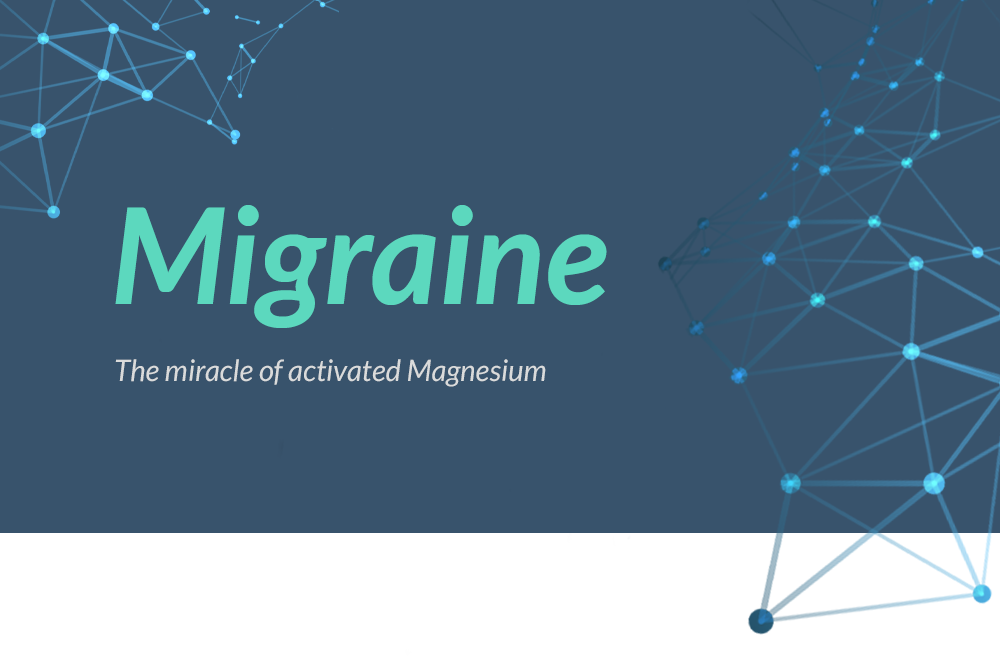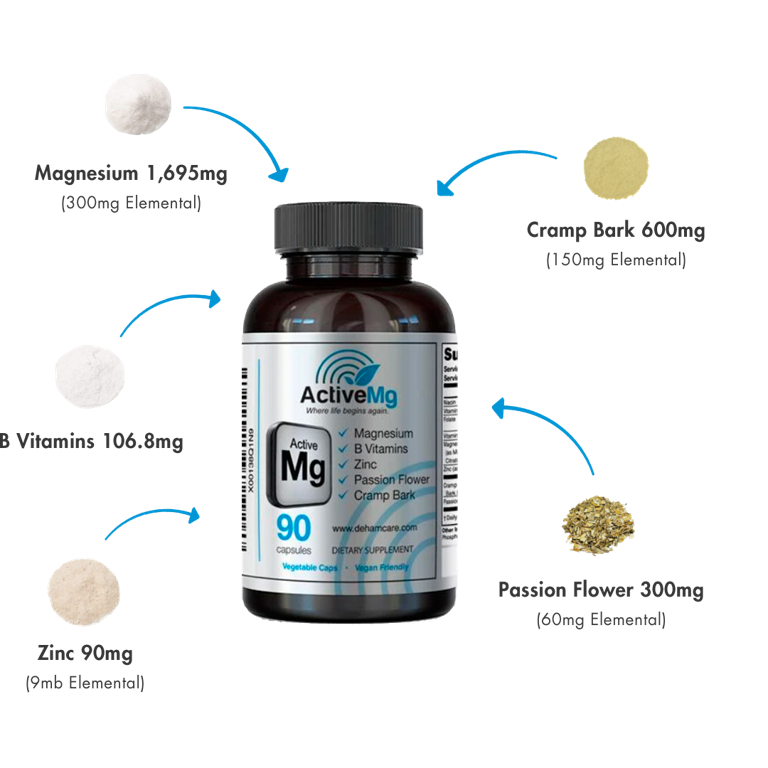ActiveMg contains Magnesium Acid Chelate, Magnesium Orotate and Magnesium Citrate providing a total 100mg of elemental Magnesium per capsule. When taking the full daily dose of 3 capsules per day, you are getting 300 mg of elemental Magnesium per day. But most importantly you are getting full absorption of the Magnesium due to the blending process in ActiveMg, which utilises B Group Vitamins to improve absorption up to 4 times over standard oral forms of Magnesium.


The Ingredients that matter for Migraine
Magnesium is an essential mineral for optimal metabolic function, but research has shown that the mineral content of magnesium in food sources is declining, and that magnesium depletion has been detected in persons with some chronic diseases. Clinical studies show that a single daily dose of between 300 and 600mg of Magnesium significantly reduces migraine attacks. Magnesium on its own is poorly bio-available and this has led to an increased awareness of proper magnesium intake and its potential therapeutic role in a number of medical conditions.

ActiveMg
ActiveMg contains all 3 of these ingredients in sufficient quantities to provide more than your daily RDI. In addition to these 3 mainstream natural elements, the use of a plant extract known as Cramp Bark is added, to provide relief from spasmodic cramping, often experienced during PMS.
See more
How Does it work?
Migraines are vascular headaches that occur when there is uneven dilation of the blood vessels. Imagine a garden hose that is narrower in some places and widens out in others and then becomes narrower again. As the water flows through the hose it will meet resistance in the narrower places and then flow with ease in the widened place only to “hit” the narrow places again.
How does a migraine occur?
This is exactly what occurs with migraine headaches when the blood vessels of the head dilate unevenly.
The blood flows through the narrow passages and then will enter a place where the blood vessel has dilated. This does not produce pain because the flow of the blood is not impeded. It is when the blood continues on its path from the widened area into another narrow area that pain is produced. The blood continues to travel through the vessel but now it must go through a smaller space.
How is pain generated?
When the blood “hits” this smaller space there is literally an impact.
The same amount of fluid must now squeeze through a narrower space. This creates pressure on the blood vessel wall, which in turn can produce pain. Oftentimes, migraine sufferers can actually feel a throbbing or pulsating, a bonging pain that is rhythmic. This is the impact of the surge of blood on the narrowed vessel that occurs with each beat of the heart. This vessel has now become inflamed and possibly distended due to the onslaught of blood trying to enter a narrow space from a dilated space. The result is pain.
How can we solve it?
If we could make the blood vessels even then that would solve our problem.
If we could make the blood vessels even—a consistent diameter that does not fluctuate – or when it does change it would dilate or constrict evenly across the length of the blood vessel—then that would solve our problem. And that's the philosophy of using Magnesium and Cramp Bark to relax the soft muscle tissue and the blending of the Magnesium with B Group Vitamins allows the magnesium to cross the blood brain barrier, staying in your body longer than conventional oral magnesium, providing the correct dosage to be effective in what we call vasodilation of the blood vessels.


